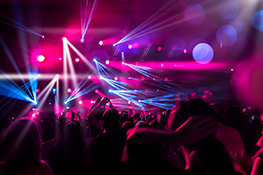The Ultimate Guide to Stage Lighting: From Zero to Hero
Understanding the Basics of Stage Lighting
Stage lighting is more than just illuminating a stage; it’s a powerful storytelling tool that shapes mood, directs attention, and enhances the overall theatrical experience. This guide will take you from novice to knowledgeable enthusiast, covering everything from fundamental concepts to advanced techniques. We’ll explore the different types of lighting instruments, their applications, and how to create captivating lighting designs.
Types of Stage Lighting Fixtures: A Comprehensive Overview
The world of stage lighting boasts a diverse range of fixtures, each serving a unique purpose. Let’s delve into some of the most commonly used:
- Fresnels: Known for their soft, even light distribution, Fresnels are ideal for highlighting actors and creating washes of color.
- Ellipsoidals (LEKO): Offering precise control over beam shape and size, Ellipsoidals are perfect for sharp gobo projections and focused illumination.
- Par Cans: These robust workhorses provide intense, highly saturated colors, often used for backlighting or accentuating specific areas.
- LED Lighting: Energy-efficient and versatile, LED fixtures offer a wide range of color temperatures and special effects, making them a popular choice for modern productions.
- Moving Lights: These automated fixtures allow for dynamic and intricate lighting designs, offering pan, tilt, and gobo rotation capabilities.
Color Temperature and Color Mixing: Mastering the Palette
Understanding color temperature (measured in Kelvin) is crucial for achieving the desired mood. Cool colors (higher Kelvin) evoke feelings of serenity and spaciousness, while warm colors (lower Kelvin) create intimacy and drama. We’ll explore color mixing techniques, including additive and subtractive mixing, and how to achieve specific color hues using gels and LED mixing capabilities.
Lighting Design Principles: Shaping the Narrative
Effective lighting design goes beyond simply illuminating the stage. It’s about creating a visual narrative that complements the performance. This section covers key principles, including:
- Motivation: Creating believable light sources within the context of the play.
- Emphasis: Drawing the audience’s attention to specific actors or elements on stage.
- Mood and Atmosphere: Using light and shadow to evoke specific emotions.
- Composition: Arranging light and shadow to create visually appealing compositions.
Practical Lighting Techniques: From Setup to Operation
This section focuses on the practical aspects of setting up and operating stage lighting equipment. We’ll cover topics such as:
- Wiring and Safety Procedures: Essential safety protocols for handling electrical equipment.
- Patching and Focusing: Connecting fixtures to the lighting console and adjusting their beams.
- Basic Console Operation: Understanding the functions of a lighting console and creating simple lighting cues.
- Troubleshooting Common Issues: Identifying and resolving typical problems encountered during setup and operation.
Advanced Lighting Techniques: Elevating Your Designs
For those seeking to take their lighting skills to the next level, we’ll explore advanced techniques such as:
- Gobo Projection: Creating patterns and textures using gobo templates.
- Special Effects: Utilizing strobes, chases, and other dynamic effects.
- Lighting for Specific Genres: Adapting lighting techniques for various theatrical styles (e.g., musicals, drama, comedy).
- Working with Lighting Designers: Collaborating effectively within a production team.
Resources and Further Learning: Continuing Your Journey
This guide provides a solid foundation in stage lighting, but the journey to mastery is ongoing. We’ll provide links to valuable resources, including online courses, industry publications, and professional organizations to further enhance your knowledge and skills. Embrace the art of illumination and transform your productions with the power of light!


 Auditorium Construction Services
Auditorium Construction Services 